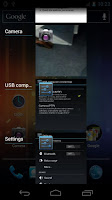During Sprint's Network Vision announcement this morning, the carrier detailed its plans to transition from its 4G
WiMAX network over to a 4G
LTE network. Sprint will be aggressively deploying LTE over a variety of spectrum holdings that it has access to.
The first thing that Sprint plans to do is to shut down its
iDEN network, used for its push-to-talk services for the Nextel brand. The iDEN network runs on 800MHz spectrum, and Sprint intends to migrate users from iDEN to its new CDMA-based push-to-talk services by 2013.
Before the iDEN network is shut down, though, Sprint will deploy 4G LTE services on its 1900MHz spectrum. The carrier is aggressively deploying this, with a launch planned for mid-2012. The LTE rollout is expected to be largely complete by 2013. This isn't Sprint's only LTE plan, as it has a partnership with LightSquared to use the 1600MHz band for LTE as well, provided LightSquared's network is approved by the FCC. Sprint also has access to Clearwire's 2,500MHz spectrum, which it currently uses for WiMAX service. The carrier said that it could eventually utilize that for LTE capacity in the future.
Once the iDEN network has been decommissioned, the 800MHz spectrum will be freed up for 3G CDMA voice service and 4G LTE data service. Sprint is confident that it has enough spectrum holdings to maintain capacity through 2015. It claims to be prepared for the onslaught of new devices, including the iPhone, and has been preparing its network capacity for months.
Sprint's LTE plans include four different bands of spectrum: 1,900MHz, 1,600MHz, 800MHz, and possibly 2,500MHz. All of these are different from the 700MHz spectrum that AT&T and Verizon Wireless already use for LTE, which makes device interoperability between the networks nearly impossible.
Sprint expects to cover 120 million residents with LTE in 2012, with 250 million covered by the end of 2013. It currently covers 123 million with WiMAX, and the future LTE network will overlap with that.






 11:21 PM
11:21 PM
 Simranpal SIngh
Simranpal SIngh
























